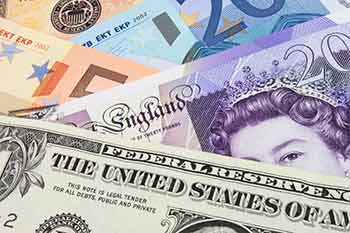
The Pound received a sizable boost earlier this week when UK Industrial Production printed three times as strongly as economists had forecast. The 0.9% monthly improvement in Industrial Production sent Sterling higher against its major currency peers, including a 1.5 cent rally against the US Dollar and a 0.5 cent rally against the Euro.
If British data continues to outperform the forecasts then investors will continue to speculate over the possibility of an earlier-than-anticipated rate hike, which in turn will help Sterling continue to appreciate.
Pound to Euro (GBP/EUR)
Assuming that UK economic indicators do not take a sudden swing south, it is possible that the Pound to Euro exchange rate (GBP/EUR) could rally towards a fresh yearly high of 1.2257 over the next few months. This is because the Eurozone’s dangerously soft inflationary outlook – the Consumer Price Index is currently running at a 4-year low of 0.5% – is likely to persuade the European Central Bank to act.
The ECB has been reluctant to loosen monetary policy, but all the recent statements from policymakers have hinted that some form of easing is on the cards. It could well be a matter of when, rather than if.
Pound to US Dollar (GBP/USD)
The Pound to US Dollar exchange rate (GBP/USD) came within 5 pips of reaching a 4-year high yesterday as markets reacted to the Federal Reserve’s dovish Minutes report. The FOMC statement showed that the Fed does not want markets thinking that an interest rate hike is imminent and this damaged demand for the ‘Greenback’.
If interest rate sentiment continues to favour Sterling then GBP/USD could strike a fresh 4-year high of 1.6823, however, strong psychological resistance exists at 1.7000 and it is unlikely that the Pound will be able to breach that level. US labour market data has started to print positively, and if this continues then the Fed will find it difficult to warrant maintaining ultra low interest rates for too long.
Pound to Australian Dollar (GBP/AUD)
Sterling struck a 4.5-year high of 1.9187 against the Australian Dollar earlier this year as traders priced in the possibility of an interest rate cut from the Reserve Bank of Australia. However, with recent data improving – most notably yesterday’s 0.3% decline in the Unemployment Rate to 5.8% – it looks as if the next RBA policy decision will be a hike rather than a cut. As a high-risk currency the ‘Aussie’ will remain susceptible to large swings if British data outperforms but it is difficult to see GBP/AUD rising back towards 1.9000 anytime soon.
Pound to New Zealand Dollar (GBP/NZD)
The Pound to New Zealand Dollar exchange rate (GBP/NZD) hit a near-2-year high of 2.0434 at the end of January, but since then the pair has depreciated by around 10 cents due to a 25 basis point interest rate hike from the Reserve Bank of New Zealand. The RBNZ is expected to raise rates by a further 25 basis points to 3.00% later this month, which could drive Sterling down towards 1.9000 against the ‘Kiwi’.

Comments are closed.